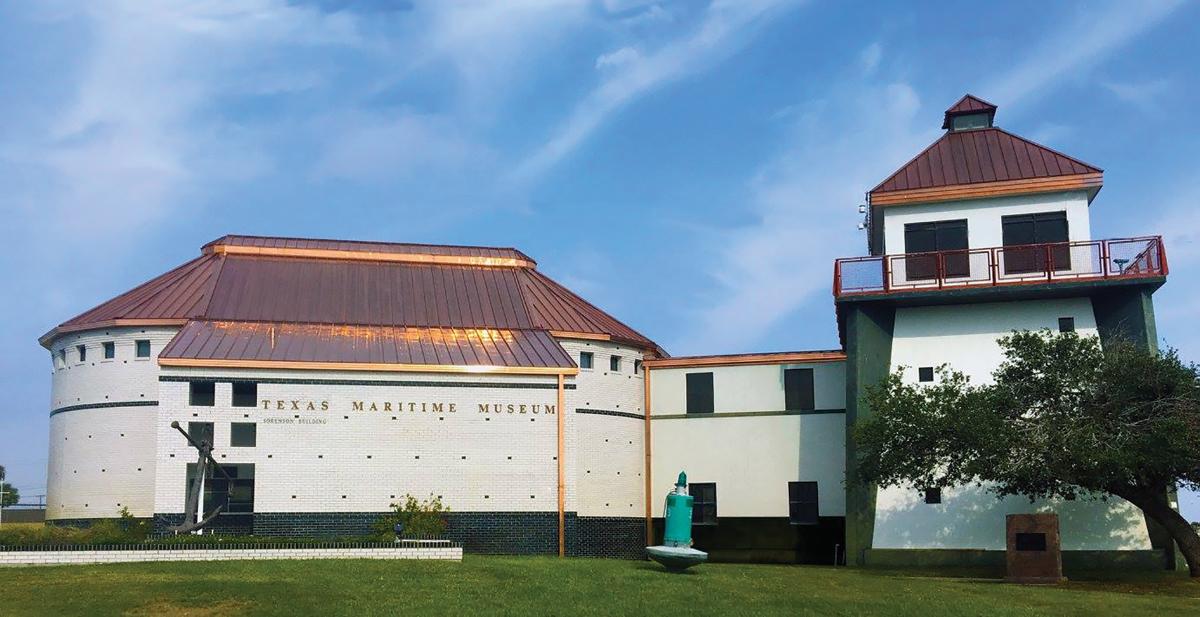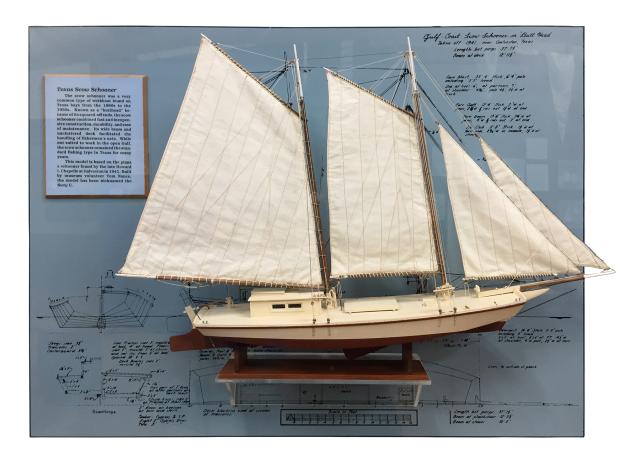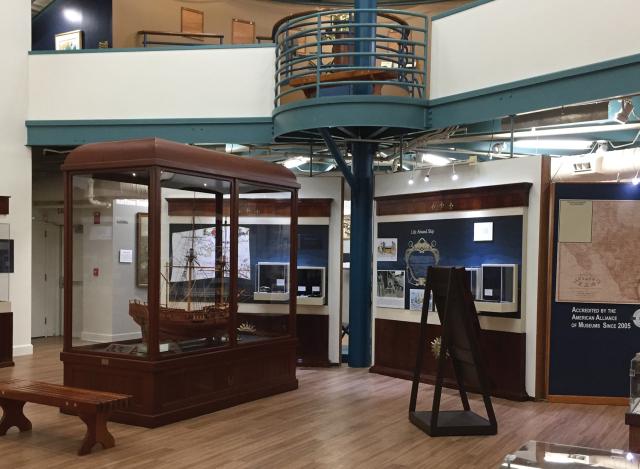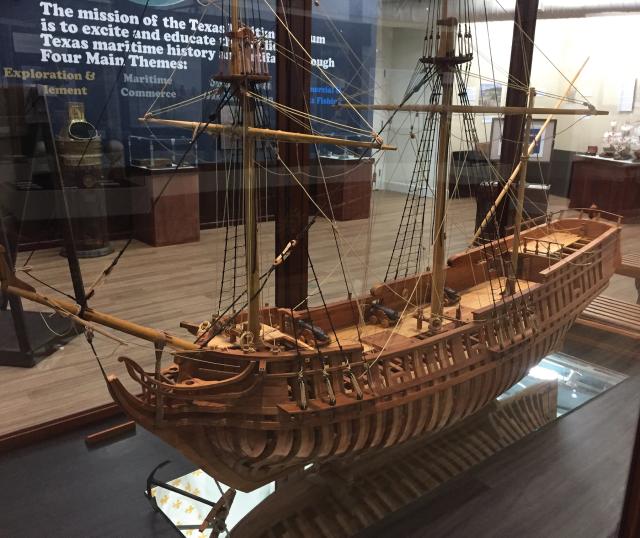The Texas Maritime Museum introduces visitors to the seagoing history of a state that more often is associated with cattle, cowboys, and oil wells. However, the Lone Star State has more than 367 miles of coastline on the Gulf of Mexico, and its maritime history is richly interwoven with French and Spanish explorers, fishing, shrimping, the Texas Navy, and the offshore oil and gas industry.
Located in Rockport, some 30 miles up the coast from Corpus Christi, the Texas Maritime Museum is so connected to its maritime mission that the building stands little more than 15 feet from the saltwater of Aransas Bay. When Hurricane Harvey slammed into south Texas in August 2017, it punched ashore at Rockport. The museum has recovered nicely, and today is repaired, restored, and welcoming. It is accredited by the American Alliance of Museums, a distinction achieved by less than 10 percent of all U.S. museums.
The history of European exploration of the Gulf Coast is a special interest of the museum. Its major and most impressive exhibit centers on the 1684–87 expedition of the French explorer René-Robert Cavelier, Sieur de La Salle. While seeking the mouth of the Mississippi River, the unlucky La Salle (his men murdered him in 1687) lost the last of his four ships when La Belle ran aground in Matagorda Bay, 80 miles from Rockport. More than 300 years later, nautical archaeologists excavated a million artifacts from the wreck. The museum displays some of these, including shoes, tools, and an English-made nocturnal—a device used for determining time at night. The centerpiece of the exhibit is a splendid four-foot model of La Belle. The exhibit also recognizes the Karankawa Indians, the now-extinct native tribe that inhabited the area when La Salle’s expedition arrived.
Texans are proud of the state’s status as a once-independent nation. In addition to an army, the Republic of Texas maintained its own navy from 1839 to 1846. A first-floor exhibit honors its ships and men with illustrations of its sailing vessels and a fine scale model of the Texas Navy schooner Invincible. An engraving on the cylinder of a replica 1851 Colt revolver commemorates the 1843 naval battle of Campeche, in which ships from the Republics of Texas and Yucatan fought the Mexican Navy.
As anyone who eats in a Rockport seafood restaurant will appreciate, Gulf waters produce excellent oysters, shrimp, and fish. Commercial fishing is integral to the coastal way of life. To work the shallow waters of local lagoons and bays, fishermen developed the Texas scow sloop, a blunt-nosed vessel with a flat bottom. For decades it was a standard in the Texan fishing fleet; they once numbered in the hundreds, but none have survived. Today, the museum displays La Tortuga, a full-size replica (29 feet at the waterline) built in 1990 and sailed by volunteers.
Focused on sport fishing, the “Allure of Fishing” exhibit will resonate with anyone who has picked up a rod and reel. Anglers will appreciate the displays of antique outboard motors, fishing rods and reels, and an impressive number of deep-sea lures. Mounted on the wall, a speckled trout and a trio of redfish remind anglers of what awaits them offshore. Visitors inspired by this exhibit will find that Rockport offers a great choice of fishing charters.
Not all Texas oil wells are on land; offshore drilling became a significant industry in the 1930s. Handsomely constructed models of offshore rigs and platforms, oil tankers, and a rig service boat help visitors appreciate the effort and technology required to bring oil to the surface and get it to market. On museum grounds outdoors, the dangers of work on an offshore rig are suggested by two emergency escape craft: an enclosed circular life raft and an orange lifeboat.
The highest building in Rockport is the museum’s Coast Guard–recognized lighthouse. Its 48-foot-high observation deck gives visitors splendid 360-degree views of the waterfront, marina, and Aransas Bay. The elevator to the viewing platform also takes visitors to the museum’s second floor, where, appropriately, they will find watercolors of Texas lighthouses and lightships by artist Harold Phenix (1928–2009). And, with luck and in the right season, visitors might see a whooping crane; these magnificent birds winter just to the north of Rockport.
The Texas Maritime Museum is the state’s official maritime museum. Anchored in a coastal community, it has a strong sense of local pride and place that is evident in the friendly docents and exhibits. Comfortable and compact, the museum will provide visitors an enjoyable and informative experience.
Mr. Galvani had a 33-year career in museums and served as director of three. He also was a surface warfare officer in the Navy and retired with the rank of captain. He lives on Bainbridge Island, Washington.






